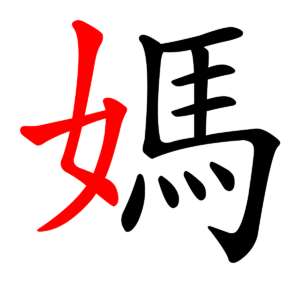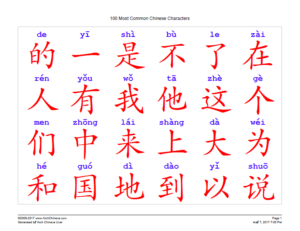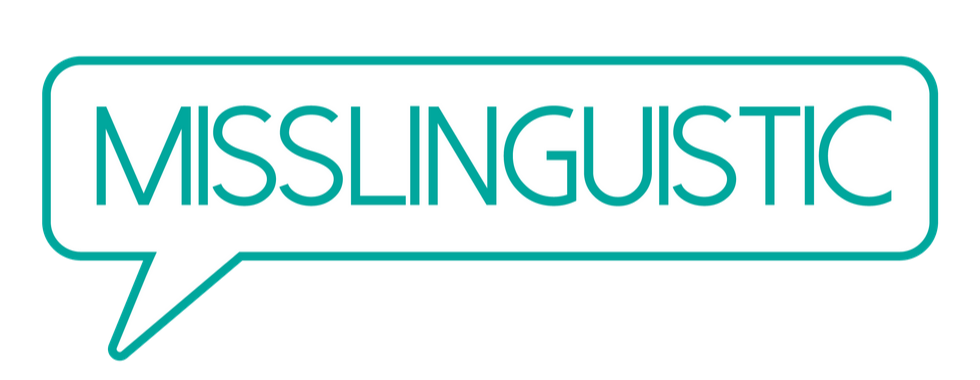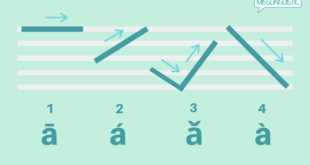This is not going to be a post about how “Chinese characters are easier than you think!”
I’ll give it to you straight. Learning to read and write in Mandarin is a serious undertaking. It might not even be necessary if your goal is more centered around speaking and listening ability.
In this post I’ll help you weigh your personal Chinese-learning goals against the commitment it will take to learn to read and/or write Chinese.
First of all, let’s face your fears.
Why Are English Speakers So Afraid of Learning New Writing Systems?
English speakers are understandably wary of learning a new writing system.
After all, our own alphabet is not exactly the most efficient. Many of you probably remember the many years it took to master the so-called spelling “rules” (more often exceptions).
The inefficiency of our English alphabet is mostly thanks to the fact that we borrowed it from an unrelated (Roman) empire. We crammed it ungracefully onto our unwieldy language, and then forced generations of English-speaking children to submit to the tyranny of spelling tests.
So after all that hassle, should you take the time to learn another writing system?
Well, if you were learning a language like Spanish, Russian, Indonesian, or Korean, I would tell you to learn the alphabet. I wouldn’t think twice. These are all very easy alphabets to learn (actually, much easier than English) and knowing the alphabet makes it much easier to learn the language.
How Chinese Characters Work
However, the Chinese writing system is not so simple. Since Chinese characters are an “ideographic” or picture-based system, characters are not broken up into sound components in the same way that alphabets or syllabaries are.
That means that the components of a Chinese character do not systematically represent sound in the same way that each letter in an English word does.
For that reason, reading or writing Chinese does not directly help you learn to speak the language.

For example, this is the traditional Chinese character for mother. It includes two radicals, one of which gives us a hint about the meaning (the red one on the left, which means woman) and one which gives us a hint about the sound (the black one on the right, which actually means horse, but is pronounced “ma”).
However, we can’t always expect the radical on the left to tell us about meaning, and the radical on the right to tell us about sound. There is no systematic way to know which one contains information about pronunciation. And to make things more confusing, there are often more than just two radicals.
So If There Is No Systematic Sound Information…How Do I Learn the Characters?
So, yeah. You pretty much just have to memorize each character. It does get easier as you go along because you get more used to the radicals. However it is never as easy as learning to spell words in a new alphabet.
And don’t forget that you also have to RETAIN each character. That means you must continuously review or at least be exposed to the characters you have previously learned. Even as you are learning new ones. Or else, you’ll forget them.
You don’t usually have to do this with alphabetic systems. If you remember how to say a word, you can usually remember how to write it, using letters that represent those sounds.
Can You Speak Chinese Without Knowing How to Read and Write?
There are millions of people who speak fluent Chinese without being able to write it. In fact, for most of the last century, nearly a quarter of Chinese citizens were not literate.
Remember: a writing system is just a code used to transmit language visually.
So if your goal is just to be able to get around on your China vacation, or impress your friends with your graceful tones, you might want to reconsider the time and effort it will take to learn Chinese characters. Because Chinese characters do take a long time to learn.
But if your goals go beyond having a shallow knowledge of the language…I’ll make my case for learning the characters later in this post.
How to Read Chinese
Let’s do a quick summary of how to read Chinese.
Pinyin: The Romanized Alphabet
In most cases, when you learn to read Chinese, you’ll first learn Pinyin.
Pinyin is the “Romanized” writing system for Chinese – it looks like English, but certain letters will be used for slightly different sounds. Here is an example of what pinyin looks like:

(graphic from Archinese.com)
In this graphic you’ll see the characters in red and the Pinyin in blue. The Pinyin helps you know how to pronounce the words.
Why do you learn Pinyin first? Because as I explained above, Chinese characters don’t systematically show you how to pronounce a word. It is very difficult to use a character to figure out how a word is pronounced.
So, beginners start with Pinyin so that they can learn how to pronounce everything. THEN they learn the characters.
That’s right, to learn to read Chinese, you have to learn two writing systems.
Or, you can choose to just stick with Pinyin.
Learning Chinese Characters
Next, you’ll start to learn Chinese characters. You will start with their components (called radicals) and work your way up to combining them into full characters. You’ll learn the proper stroke order (more on that in another post) as well as spacing and punctuation.
The Difference Between Reading and Writing Chinese
Ok, I know you know the difference between reading and writing. But let’s consider the two abilities and how important they will be for you in everyday life.
Let’s take my situation, for example. I’ve decided to focus on improving my reading abilities. But for the most part, I’m not going to spend too much time worry about improving my writing. Why? Because these days, all my writing is by computer or phone.
And guess what – to write by computer and phone, most Chinese keyboards let you type in pinyin. They then display the matching characters. You choose the right one by clicking or typing the number of the relevant character.
If you’d like to see what that looks like, here is a short video of me typing in Chinese on my phone and on my computer by inputting pinyin.
https://youtu.be/YWedQ8cpcGo
So to be able to write, you only need to recognize the characters – you don’t actually have to be able to write them stroke by stroke. This is why for my purposes, it is no longer that important that I be able to write the thousands of characters I already know how to read.
Why You Should Learn to Read Chinese Characters
As we’ve established, you don’t need to be able to read in order to be able to speak (especially with the help of Pinyin!)
However, if you want to become an advanced or even intermediate speaker of Chinese, you will need to have access to a lot of media (not only TV and movies, but also newspapers, magazines, and blog articles, etc.) Not being able to read will drastically reduce the media you can access. For this reason I do recommend at least learning a few hundred Chinese characters.
Traveling in China
When in China, being able to read Chinese will help a lot. If you want to avoid tourist traps, it helps to be able to read a Chinese menu.
Also, in the major Chinese cities there will be a lot of translated signeage, but those translations can sometimes be more humorous than accurate.
If You Do Want to Learn to Write

My terrible handwriting (but I’m working on it!)
My goal this year is not so much to increase the number of characters I can write, but to improve my handwriting through more careful attention to stroke order. I’ll be posting more about that soon, make sure to subscribe so you don’t miss it!
Even if you decide not to spend too much time learning to write, I definitely recommend at least becoming familiar with writing a few basic characters. When you are first getting familiar with the Chinese language, learning how to write them will help you recognize and remember them.
After learning the first 100 or so most frequently used characters, you can decide if it is worth the effort to continue.
Just keep in mind that the first 100 characters will also be the hardest, since your character knowledge will be cumulative. When you are into the thousands, you’ll have a much better eye for the written language. You will be able to memorize new characters much more quickly.
If you’re interested in learning how to write Chinese characters, please check out my comprehensive guide to learning Chinese characters online!
In the meantime, here is a timelapse of me working on my stroke order by copying out a list of characters.
What do you find difficult about learning to read and write Chinese? Have you decide to learn to read and write, or will you focus on speaking? Let us know in the comments below!








personally, i find writing characters pretty fun and relaxing. that may be weird. 可能奇怪。
I have only four months in Taiwan, I am taking a Chinese course, and I understand I love learning Chinese, but I hate to write (this consume a lot of time and effort); that no made sense because I am a professional guy where only I need a computer and phone.
The problem is that the university takes me up writing exam! And I have insufficient qualifications, haha.
And I am trying to figure out if I need to write “for learning” because I use flashcards (help me memorize).
By the way, my goals are talked, reading, and listening.
good article!